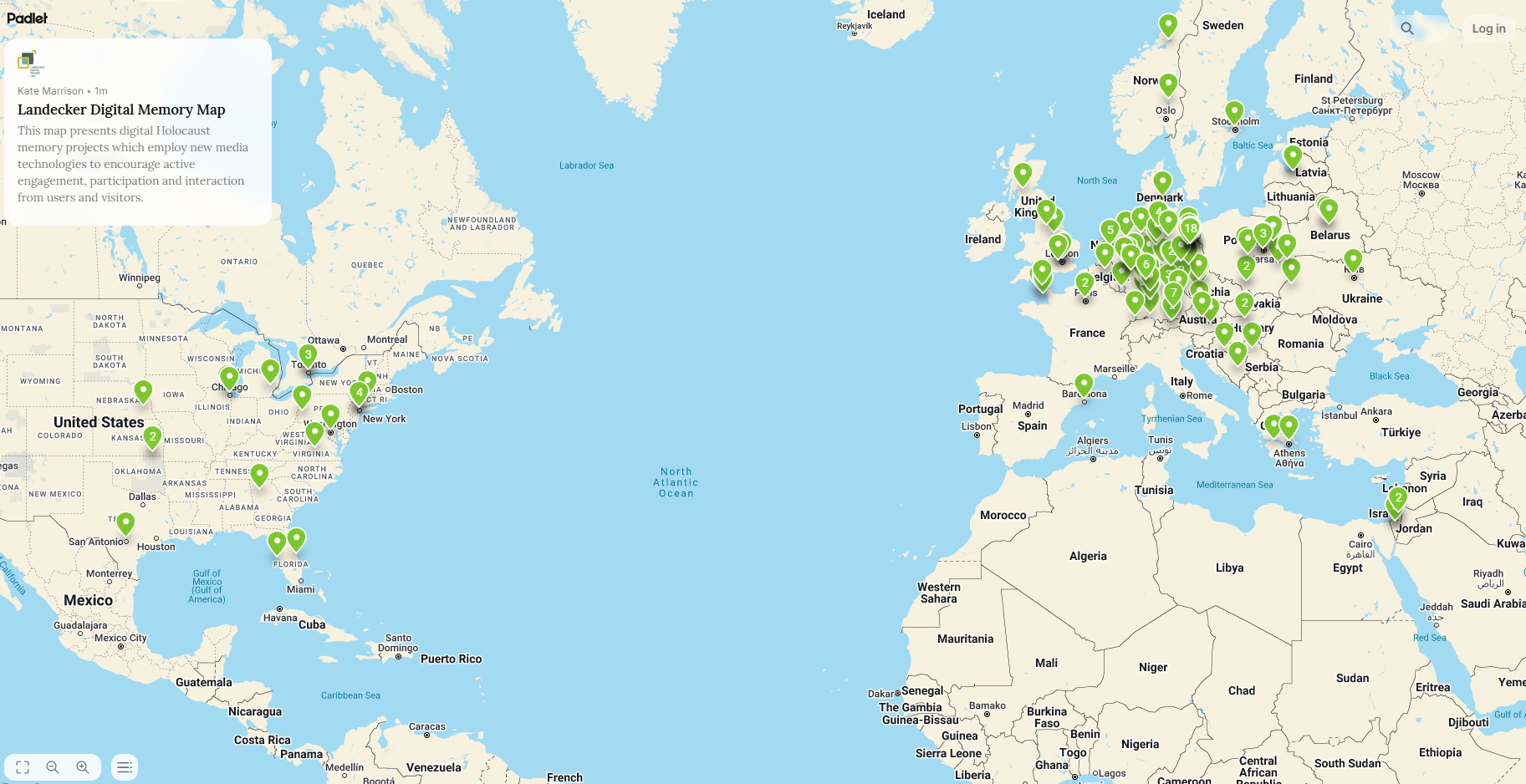
Building a Living Database, Part 1: Mapping the World’s Digital Holocaust Memory Projects
By Dr Kate Marrison, Research Fellow, Landecker Digital Memory Lab
Today the Landecker Digital Memory Lab launches its digital map of global Holocaust memory, coinciding with the 80th anniversary of the liberation of Bergen-Belsen. Research Fellow Dr Kate Marrison sets out its ambitious aims.
This year marks a major milestone anniversary – 80 years since the end of the Second World War and thus, (more than) eight decades since the liberation of the camps.
The UK Holocaust Memorial Day Trust’s theme for International Holocaust Remembrance Day, ‘For a Better Future’ feels particularly pertinent as the Holocaust moves from an event in living history to forms of “mediated memory” (Young, 2000).
Aligned with the Landecker Digital Memory Lab’s central mission of “ensuring a sustainable future for Holocaust memory in the digital age”, this moment offers an opportunity to look ahead and think critically about the possibilities of our digital futures.
So, what does digital memory practice look like today and how might it shape Holocaust memory going forward?
Listening across sectors
After listening to more than 120 memory professionals, tech practitioners, educators, designers, curators, creatives and academics working in this field, we observed that the current digital Holocaust memoryscape is uneven and fragmented, where projects often exist in silos unable to learn from practice that came before. Some are even at risk of being abandoned or becoming digitally obsolete (see our six Recommendation Reports for Digital Interventions into Holocaust Memory for more).
These findings shaped our commitment to take a holistic approach and to design outputs which enhance digital literacies, and encourage knowledge exchange and international trans-disciplinary collaboration.
Enter the Landecker Digital Memory Map – an open-access resource which seeks to capture digital Holocaust memory projects on a global scale. Featuring more than 350 initiatives to date, the map identifies works that integrate a range of new media technologies from augmented and virtual reality, computer games, 360-degree photography, 3D modelling, social media and interactive survivor testimony, among others.
Hosted on Padlet, the map is designed to be a simple tool for a variety of users from researchers, educators, funders, creators to interested individuals, a launch pad to the project’s official websites where more information can be found.

Launching the map on the 80th anniversary of the liberation of Bergen-Belsen provides an opportunity to spotlight the seminal work at the Bergen-Belsen Memorial, where staff have been experimenting with digital tools for more than a decade.
Most notably, in 2012, the SPECS research group, led by Prof. Paul Verschure, in collaboration with the Bergen-Belsen Memorial and Lower Saxony Memorials in Germany created Space of Memory, a 3D digital reconstruction of the architecture of the historical camp.
Enter the Landecker Digital Memory Map – an open-access resource seeking to capture digital Holocaust memory projects on a global scale, featuring more than 350 initiatives.
Accessible through exhibition display between 2012 -2014 at the Anne-Frank-Platz in the memorial’s grounds (and for a time, at the Weiner Holocaust Library in the UK), the project reinstates spatial structures within the landscape including details of fences, barracks and camp buildings.
The installation’s content continues to exist in a tablet app accessible via iPads on site. The app offers both augmented reality (AR) and virtual reality (VR) experiences.
One of the key affordances of integrating these technologies is empowering visitors to navigate both the digital and the physical as part of their own exploration of the contemporary memorial site. Bergen-Belsen, unlike other sites of Nazi persecution such as Auschwitz-Birkenau, is a large empty expanse, as the British Army destroyed camp structures upon liberation due to the outbreak of typhus (see the blog: 75 Years Later: Digitally Commemorating the Liberation of Bergen-Belsen for more on the app).
Working on new digital developments, EU-funded MEMORISE have created a 3D Prisoner Artwork Explorer which enables users to zoom into the detail of paintings of the camp created by Hungarian artist and prisoner, Ervin Abadi.
As part of their work, the team have also developed a 3D model of the Bernburg Euthanasia Center. Further prototypes can be found at the current MEMORISE exhibition at the Bergen-Belsen Memorial.
Now, the Landecker Digital Memory Map is seeking to highlight well-known projects and works-in-progress. The map is the precursor to a much larger resource that the Lab is currently developing, the living database-archive. More to come on this soon.
Do you have a project that is not featured on the map? Let us know about it.